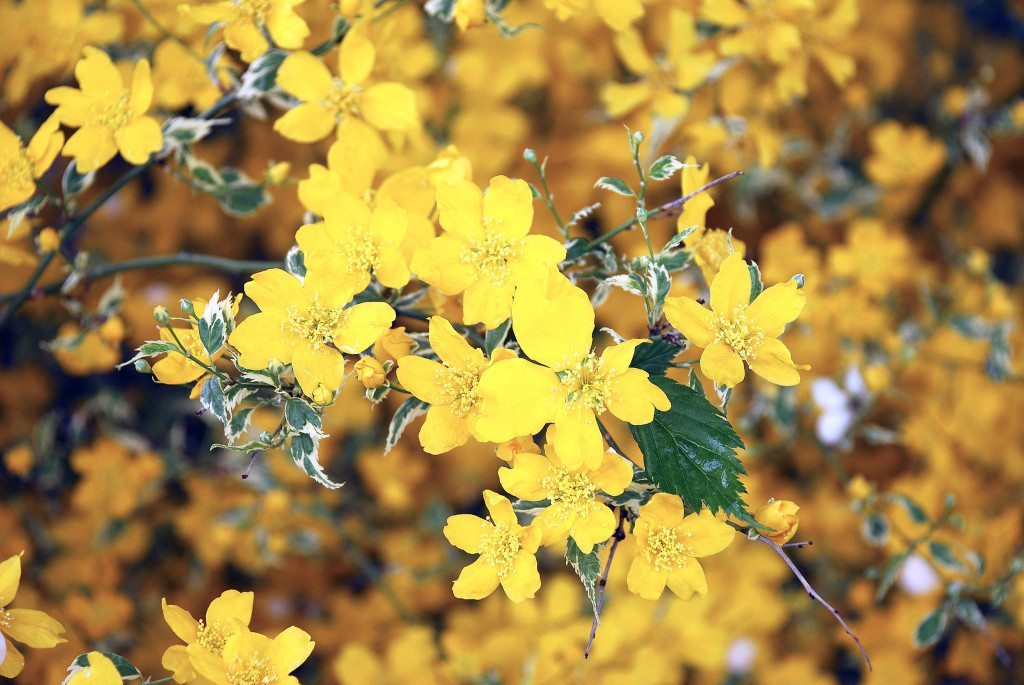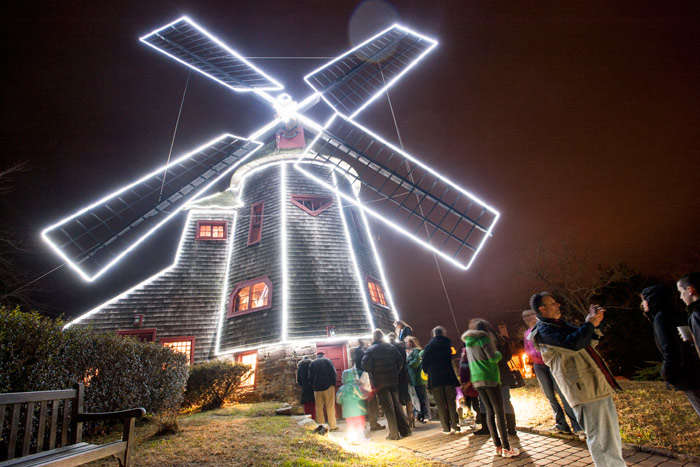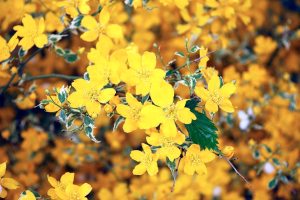
We often see azalea, lilac and forsythia flowering in the spring or spirea flowering in the summer, but there are many other lesser-known shrubs to consider planting in your garden this fall for next year’s growing season. Shrubs, often the anchors of your garden borders, come in many different shapes, sizes, colors and flowering attributes. It is up to you to decide which flowering spring and summer shrubs will please your eye and enhance your garden. Here are a few favorites which beautify my garden.
Vitex agnus-castus var. latifolia, otherwise known as the “Chaste Tree,” is a deciduous shrub that can grow in full sun to 25 feet tall without pruning, making it a wonderful selection for the back of the border. Its fragrant, delicate, palm-like leaves and violet-blue summer flowers have graced southern borders for many years and more recently has become sought after here in the North.
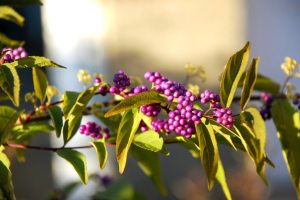
Kolkwitzia amabilis “Pink Cloud” beauty bush is another deciduous shrub that makes a splash in the back of a sunny border with an abundance of pale pink tubular flowers that open in late spring attracting pollinators of all varieties. The shrub grows well in most soil types. It is a multi-stemmed, vase-shaped bush, growing to 10 feet, which then becomes a striking fountain of pink arching branches.
Chaenomeles superba “Cameo” quince growing to three feet or chaenomeles japonica “Jet Trail” growing to six feet are two deciduous shrubs that do well in sun or part shade. Cameo is a thornless species with peach-pink flowers. Jet Trail has white flowers in the spring followed by bright yellow quince fruit in the late summer. Many people find that when cooked the fruit tastes like apple; the fruit is often used to make quince jelly.
Kerria japonica “Picta” lights up the late spring border with its profusion of bright golden yellow flowers and gray-green leaves outlined in white on a spreading shape. In full sun it will grow to five feet with graceful, arching branches.
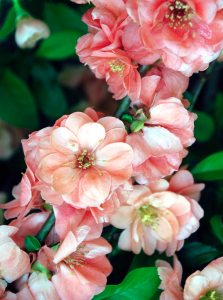
(Photos by Josephine Borut)
Clethra alnifolia “Ruby Spice” summersweet produces sweetly fragrant rosy-pink blooms in late summer. This is an upright, hardy, native shrub growing to six feet while tolerating a wide range of garden conditions. The abundance of fluffy spikes of delicate flowers in full sun attracts many pollinators.
Callicarpa dichotoma “Purple Beautyberry” is a deciduous woodland shrub grown mainly for its clusters of small purple berries that look like a string of beads tangled in the branches. These berries start out as tiny pale pink flowers in the summer. The long, arching branches give this shrub a graceful shape in the autumn. The berries are not a wildlife favorite, but will attract birds in late winter. There is a white flowering version, C. dichotoma “Albafructus” which will add a showy display to your autumn border. Another variety worth considering is Callicarpa americana, a native shrub with the same beautiful purple berries. All Callicarpa are good additions to a Xeriscape garden.
In addition, look for some of the following shrubs to enhance the color, loveliness and fragrance of your garden: Calycanthus (Carolina Allspice) “Aphrodite,” Abelia schumannii “Bumblebee,” Exochorda macrantha “The Bride” pearlbush, Physocarpus opulifolious (Ninebark) “Dart’s Gold,” Kalmia latifolia (Mountain Laurel) “Freckles,” Deutzia gracilis “Chardonnay Pearls,” Daphne burkwoodie “Somerset” and Viburnum burkwoodie “Mohawk.”
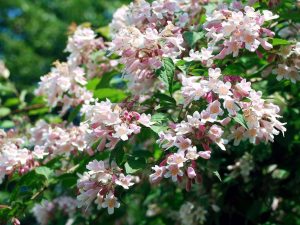
Ask our local nurseries to carry some of the above shrubs to add to the biodiversity on Long Island. A wide range of different plants will help our butterflies, bees, moths and birds to survive and flourish, thereby bringing back beauty, abundance and bird song. Enjoy your blooming gardens.
The Long Island Horticultural Society meets each month on a Sunday afternoon at 1:30 p.m. at Planting Fields Arboretum in Oyster Bay. The organization does not meet during July and August. The next meeting will be Sept. 20. The speaker will be Rusty Schmidt, a landscape ecologist and author, whose expertise is the use of native plants and storm water management systems. His topic is “Introduction to Rain Gardens.” For more information, go to www.lihort.org.
Josephine Borut is a past board member of the Long Island Rose Society and the Long Island Horticultural Society. She is a current member of the American Rose Society and the Long Island Horticultural Society.




